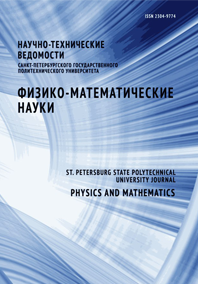Accuracy of flow simulation in a low-pressure turbine using a laminar-turbulent transition model
Nowadays, in order to decrease the aircraft engine weight, designers are forced to reduce the number of blades in the low-pressure turbine (LPT) since LPT is one of the heaviest components. The LPT operates in a wide range of Reynolds numbers, which can reach values of less than 105 at cruise mode. The correct modeling of the laminar-turbulent transition (LT) in the boundary layer of LPT blades is crucial for predicting the efficiency characteristics. The aim of the study is to evaluate the capabilities of several variants of the LT model for modeling the flow over the LPT blade. The SST γ – R͠ eθt model with different closing correlations, which control the transition onset and transition length, is considered. They are implemented in the research code NOISEtte. Validation of the realization is done on the basis of computations of flat plate flows from the ERCOFTAC database (experimental series T3). The flow in the turbine high-loaded cascade T106C is considered. Together with the experimental data, the results of scale-resolving simulation are used as the reference. The influence of the choice of empirical correlations for the γ – R͠ eθt model on the aerodynamic characteristics near the surface of the blade and at the outlet is evaluated. The results compared with those obtained using the same model and correlations within commercial code Numeca. The study revealed that the results of the same empirical correlations obtained using different flow solvers differ noticeably from each other.


